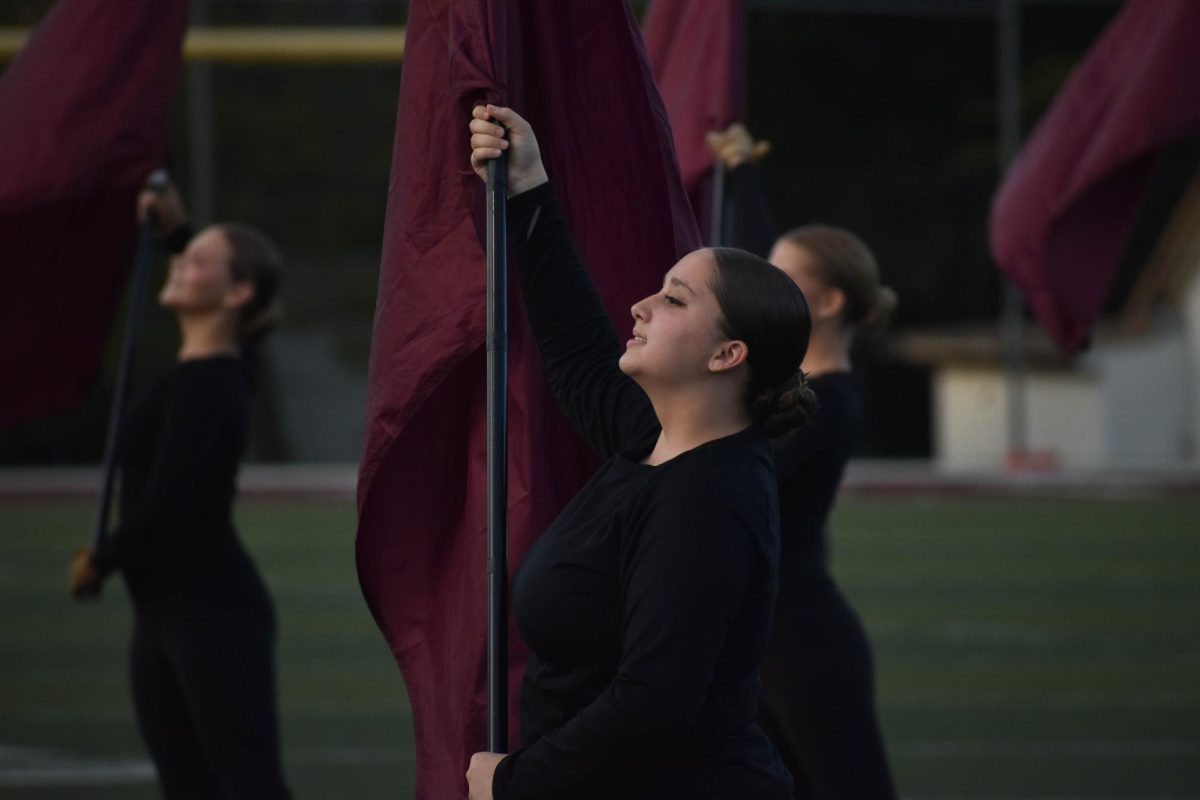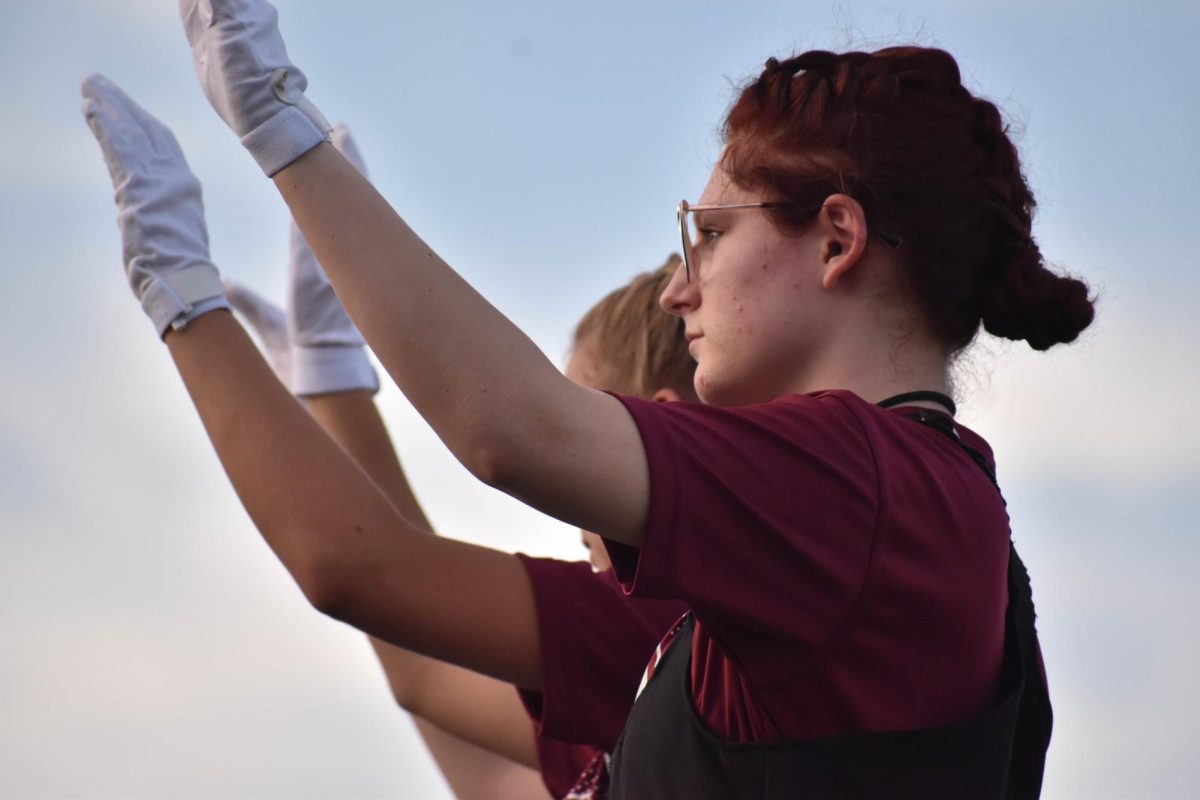Color guard is a performance-based sport based on vibrant dances and choreography. As an individual sport, color guard has brought light and liveliness to games and school events for RHS. This year’s team will debut their costumes at Thursday’s game and join the band in dazzling the crowd during the halftime show.
Because color guard and marching band are constantly grouped together, many view the two programs as being the same. Sophomore color guard member Zoe McKee confirms that there is a misconception about the complementary programs.
“I do believe that guard gets looked over a lot of the time because we get pushed in together with the band. And when people see us, they’re like, ‘Oh, you’re part of the marching band, yeah?’ And we don’t get the same recognition like cheerleaders. They have their own moment to shine, and when we shine, we’re kind of just like dimmed in the background, even though we have six-foot poles,” McKee said.
Fellow teammate Amari Houston emphasizes color guard’s athletic individuality.
“I think it’s cool that they put them together, but we’re definitely not the same thing. I feel like, in a lot of sports, you’re gonna have to prove yourself to be taken seriously. Color guard isn’t really different than any other sport. [It’s] just that we have flags and rifles,” Houston said. “I think that color guard does get the same level of support as the band since we’re so close, like a relative.”
Though color guard’s performances are always vibrant and visual, to McKee, their consistent individual effort often feels unseen by many. She would like to remedy this.
“I personally think that color guard should be recognized separately from band because we do practice two to three days a week, and we have practice every morning, and then we have to show up thirty minutes before the band to absolutely everything we do. Every practice, every game, every competition, we have to show up,” McKee said.
Fellow teammate Lily Trusler, an RHS junior, also sees color guard and band as comparable, but, on their own, very different.
“I think they’re just different. I wouldn’t say that [either is] higher, I’d just say they’re just way different, like apples and oranges. That’s like grouping the cheerleaders and the football players. Way different,” Trusler said.
Contrary to popular belief, color guard is an inclusive organization. With the necessary support, anyone can join this sport.
“I think the misconception is that people think that you can’t learn how to do it, even though you haven’t done it before. I think, with practice, you can definitely learn how to do all the stuff out there,” Houston said.
Color guard offers a uniquely accessible environment—and, because of the sport’s nature, a uniquely unified one.
“We have a whole different side of competitions than band does … Band is in their own little sections, but we’re just whole because that’s a part of the sport—unison, visual unison as a team,” Houston said.
The unity required by performance often spills over into everyday life, fostering a culture of warmth and friendship within the sport.
“At guard camp, we do a lot of games and bonding activities. Everybody’s really close to each other from that, everybody hangs out, everybody talks to each other. We hang out outside of guard in small groups. It’s wonderful,” Trusler said.












